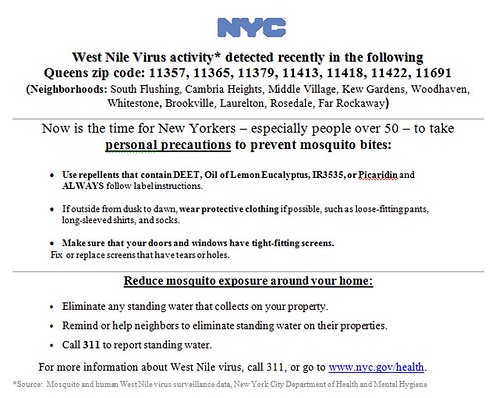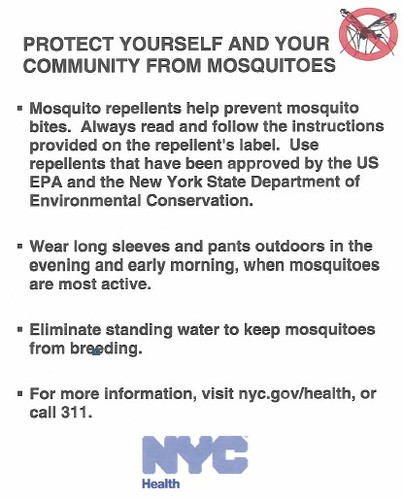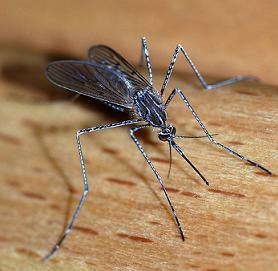The West Nile Virus has been reported within zip code 11379 (Middle Village). It is therefore important to take necessary precautions and eliminate the threat of mosquito bites.
From the NYC Department of Heath:
What can I do around my home to help reduce exposure to mosquitoes?
Mosquitoes lay their eggs in standing or slow moving water. Also weeds, tall grass, and bushes provide an outdoor resting place for mosquitoes. In residential areas, standing water can accumulate in unused tires, cans, unused pools and pool covers, and other receptacles that collect water. Mosquitoes can enter homes through unscreened windows or doors, or broken screens. Follow these general guidelines to help reduce mosquito populations in your area:
Eliminate any standing water that collects on your property by:
• Removing all discarded tires from your property.
• Disposing of tin cans, plastic containers, ceramic pots, or similar water-collecting containers.
• Making sure roof gutters drain properly and cleaning clogged gutters in the spring and fall.
• Cleaning and chlorinating swimming pools, outdoor saunas and hot tubs. If not in use, keep empty and covered.
• Draining water from pool covers.
• Changing the water in bird baths at least every 3 or 4 days.
• Turning over plastic wading pools and wheelbarrows when not in use.
• Repair or replace all screens in your home that have tears or holes.
• Remind or help neighbors to eliminate mosquito-breeding sites on their properties.
Some local hardware stores may carry a product called Mosquito Dunk® that contains a larvicide – Bacillus thuringiensis israelensis (BTI) – for use in areas of standing water around the home. The New York City Department of Health and Mental Hygiene recommends eliminating standing water around the home to reduce breeding sites for mosquitoes and warns that direct handling of larvicides may cause skin and eye irritation. Use these products only as directed by the manufacturer. If these products are purchased for home use, we recommend careful reading of the hazards label, directions, and details regarding storage and handling.





